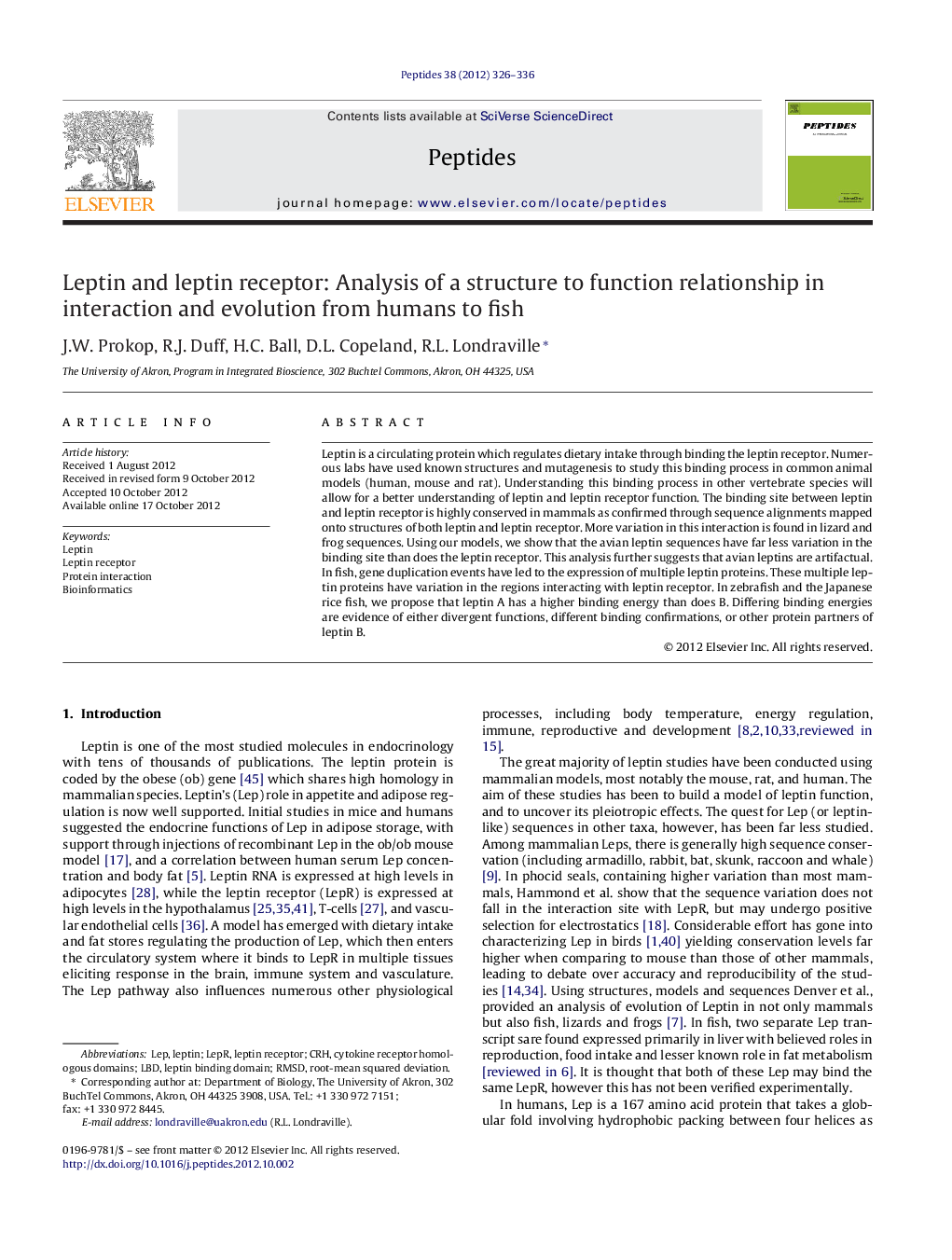| Article ID | Journal | Published Year | Pages | File Type |
|---|---|---|---|---|
| 2006252 | Peptides | 2012 | 11 Pages |
Leptin is a circulating protein which regulates dietary intake through binding the leptin receptor. Numerous labs have used known structures and mutagenesis to study this binding process in common animal models (human, mouse and rat). Understanding this binding process in other vertebrate species will allow for a better understanding of leptin and leptin receptor function. The binding site between leptin and leptin receptor is highly conserved in mammals as confirmed through sequence alignments mapped onto structures of both leptin and leptin receptor. More variation in this interaction is found in lizard and frog sequences. Using our models, we show that the avian leptin sequences have far less variation in the binding site than does the leptin receptor. This analysis further suggests that avian leptins are artifactual. In fish, gene duplication events have led to the expression of multiple leptin proteins. These multiple leptin proteins have variation in the regions interacting with leptin receptor. In zebrafish and the Japanese rice fish, we propose that leptin A has a higher binding energy than does B. Differing binding energies are evidence of either divergent functions, different binding confirmations, or other protein partners of leptin B.
Graphical abstractInformative docking of Lep and LepR based on sequence alignments and functional data. Amino acids in red are known natural variants associated with disease phenotype, green are post translational modifications, magenta are known mutations that lead to altered function, cyan are amino acids highly conserved in multiple species, and yellow are amino acids with functional groups conserved.Figure optionsDownload full-size imageDownload as PowerPoint slideHighlights► Interaction between leptin and the leptin receptor is conserved in land vertebrates. ► Avian leptin sequences appear artifactual as evolution rates of Lep do not match LepR. ► Fish contain multiple amino acid variations in the interaction of Lep to LepR. ► Predicted binding for Lep are stronger for A vs. B proteins in zebrafish.
